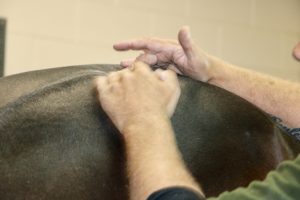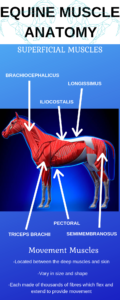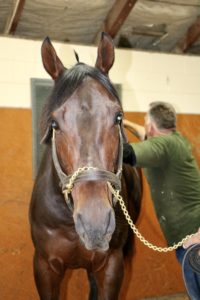Healing hands : equine muscle therapist Peter Neal
It is common knowledge that athletes often go through their fair share of trials and tribulations when it comes to injuries and setbacks. Chiropractors, physicians or muscle therapists are no strangers to one with a highly active lifestyle or career. However, what if that athlete can’t actually tell you what’s wrong? That’s when people such as Peter Neal step in, an equine muscle therapist based in the Waikato.
Specialising in equine biomechanics, ‘Pete’ travels throughout the Waikato on a daily basis treating equine athletes who come in many different shapes and forms. Using simply his own two hands and a vast array of knowledge, Pete treats anything from yearlings, stallions, race and sport horses; “Anything that’s active in the equine industry.” Pete’s massage techniques stretches muscle fibres and fascia which are knotted, freeing inflexible muscles to increase the flow of oxygen rich blood. Just like athletes, equines can only perform to the best of their ability when their bodies will allow it, Pete helps to ensure this.
“If you’ve got the freedom to move, you’ve got the freedom to perform.”

Built for movement, the equine muscular system is greatly complex and powerful. Categorised into three different types; skeletal, cardiac and smooth, Peter treats what is known as the superficial muscles. Classified as movement muscles, they are located between the deep muscles and the skin, and vary in size and shape. Peter explains there is 30 major points in the horse, and his job involves “opening the points of the muscles so the fuel can get in”, thus relieving the horse of any pain.
Using strong massage techniques, he begins the treatment behind the horse’s ear working down along the neck to the point of the shoulder, the brachiocephalicus muscle. Moving throughout the horse’s body, to the triceps brachii muscle on the upper forelimb or shoulder. The pectoral muscles underneath, and the longissimus and iliocostalis muscles which run along the spine. Eventually working his way to the very large and powerful glutes and hamstrings known as semimembranosus muscles. “I pretty much go over the whole horse.” These are just some of the key muscles within the horse’s anatomy where Pete often finds issues.

Over his years of experience, Pete has found that if after two sessions there is little to no improvement within the horse, the issue is more likely structural rather than muscular. Describing himself as quite a confident person, he confesses he feels little pressure in trying to ‘fix’ a horse, as his results have been well proven over the years. Pete ensures to keep in touch with his clients and their horse’s progress, as a somewhat reassurance the therapy is successful. He also feels a great sense of pride and accomplishment when once injured horses he has treated go on to make significant recoveries.
“Watching horses improve in their performance is as good as it gets.”
Thoroughly involved in the horseracing industry, he finds great benefit and pleasure in working with elite horses and following their racing careers. As a high pressure and expensive sport, Pete considers the ability to improve and enhance the horse’s performance naturally is vital. Treating some of the greatest stallions and racehorses the country has to offer on a weekly basis is a deeply gratifying part of the job for Pete. “I’m fortunate enough to be working with horses that are pretty much at the top of the ladder.”

A former dairy farmer, Pete has discovered his current career path has very little negatives, and is a passion rather than a livelihood. “I’m passionate about what I do, I think that’s a big part of it.” Not shy to confess his love for the job and appreciation for his clients, Pete is undeniably a talented and humble man who embodies ‘do what you love and you will never work a day in your life.’
[slideshow_deploy id=’34689′]




